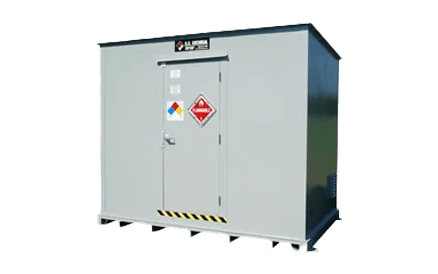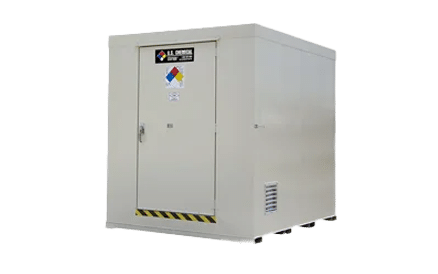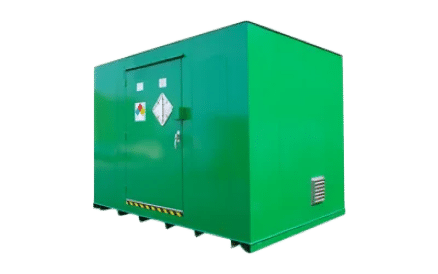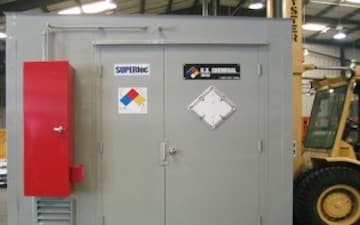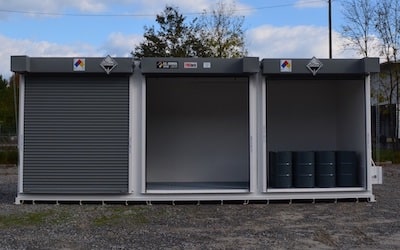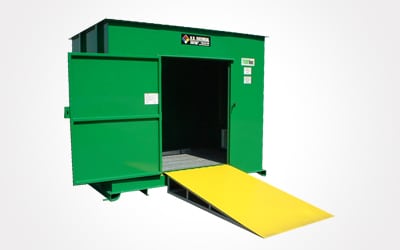Pre-Engineered Chemical Storage Lockers
U.S. Chemical Storage manufactures highly portable, pre-engineered chemical storage lockers to provide a quick, safe, and compliant solution to chemical storage when full customization is not necessary. Flammable lockers are available in 2- or 4-hour fire-rated constructions for compliant storage of hazardous chemicals.
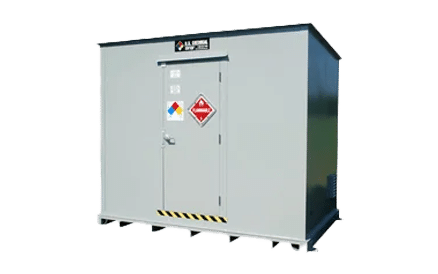
Our pre-engineered chemical storage lockers keep flammable and non-combustible inventory safe and come in flammable, non-combustible (non-flammable), or turf chemical options.
Types of Pre-Engineered Chemical Storage Lockers
Pre-Engineered Flammable Lockers
Pre-engineered, quick delivery outdoor lockers offer compliant storage for hazardous chemicals stored in 55-gallon drums, 5-gallon pails and other small volume containers.
Pre-Engineered Non Fire-Rated Lockers
Reduce the risk of fines by managing your chemical drum storage needs with pre-engineered, non fire-rated outdoor storage lockers. All rugged, pre-engineered, non fire-rated lockers are manufactured from heavy gauge steel to withstand a variety of outdoor environments and inclement weather.
Pre-Engineered Turf Chemical Lockers
Pre-engineered, non-combustible turf chemical lockers promote safe handling and storage practices of agricultural management chemicals. Use these rugged, non-fire-rated lockers to house your chemical pesticides, fertilizers, and more, safely and securely.
Use Outdoor Safety Lockers for Small Quantity Drum Storage
Available in fire-rated and non-combustible styles, all storage lockers feature built-in, leak-tested secondary containment sumps with removable galvanized steel grate floors, inside and outside grounding lugs, natural ventilation and more. Customize lockers with different accessories including explosion-proof panels, lighting, shelving, fire protection systems and more. Engineered to store 55-gallon drum containers, lockers are available in standard sizes ranging from 2,4,6,9,12 and 16 drum storage capacity.
All outdoor pre-engineered storage lockers can meet EPA, OSHA and NFPA regulations as well as FM or Warnock Hersey standards.
Features & Benefits
- Non-combustible construction with three-point latching, single door for easy pallet loading
- NFPA 704 diamond decal for identification of contents
- Chemical- and UV-resistant coating
- Customizable options include explosion-proof panels, lighting, shelving, fire protection systems and more
- FM-approved and meets EPA, NFPA 30 and NFPA 1 requirements
- Forklift channels for easy relocation
- Multiple static grounding connections
- Fire-rated construction with third-party listed, fire-rated double door (includes door closer as required by code)
Common Applications
- Golf Course Maintenance
- Paint Storage
- Pool Chemical Storage
- Hazardous Waste Storage
Compliance & Approvals
At U.S. Chemical Storage we strive to give you the best solution for your operations. This building and its accompanying accessories can be engineered to meet the following approvals and certifications based upon your unique set of needs.
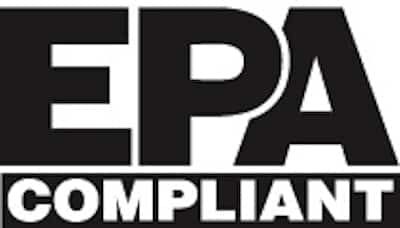
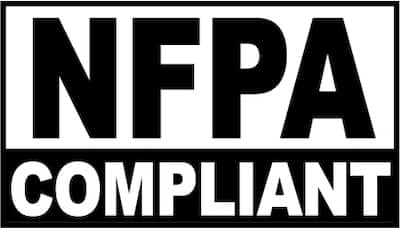
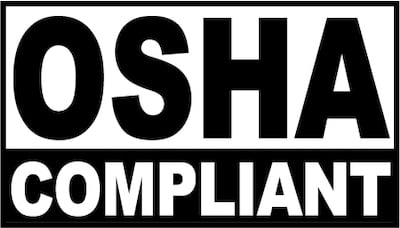
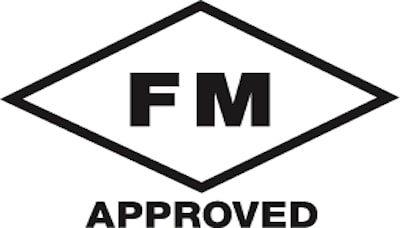
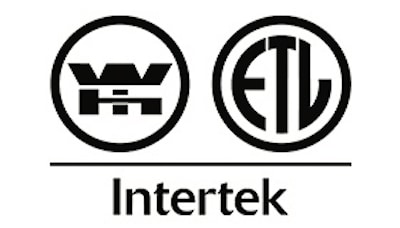
Frequently Asked Questions
Chemical storage buildings manufactured by U.S. Chemical Storage are designed to get your operation compliant. Contact one of our technical sales engineers to learn how we can find the best solution for your compliance needs. You will also want to learn more about specific chemical storage requirements in your specific area by contacting your local “Authority Having Jurisdiction” (AHJ) who could be a local fire marshal, a municipal code official, or a city environmental department.
The definition of a “sump” is a pit or reservoir providing containment for spilled liquids. U.S. Chemical Storage offers leak-proof spill containment sumps in each standard model. All our sumps are tested for leaks for a 24-hour period prior to finishing. The sump is then covered by a steel or fiberglass floor grating and can even be equipped with a resistant plastic sump liner to protect against corrosive chemical accidental spills. The size of the sump is dictated by code based on the volume of liquid being stored within the building.
Shelves are used to help keep smaller containers of chemicals organized. U.S. Chemical Storage offers a variety of shelving for your specific application. Most commonly used is a galvanized steel shelf with a 2-inch wall around the perimeter. The leak-proof containment sump lip around the edge will prevent small spills from reaching the floor.
Request a Quote
RELATED ARTICLES
Flammable paint storage lockers are designed to store flammable and combustible materials safely and compliantly. Such lockers must meet EPA, OSHA, & NFPA regulations.
Fire rated flammable and combustible storage, that keeps your company in compliance and provides protection to employees.
Fertilizer chemical storage buildings and pesticide storage lockers ensures you maintain compliance with OSHA and keeps agriculture chemicals stored safely.

YOUR PARTNER IN THE PROCESS. EXPERIENCE YOU CAN TRUST.
We deliver the precise building solution with the speed, security, and high quality that you demand.

